Buying Guide for the Best Dutch Oven For Glass Top Stove
Choosing the right Dutch oven for a glass top stove requires careful consideration of several key specifications. A Dutch oven is a versatile and durable piece of cookware that can be used for a variety of cooking methods, including baking, braising, and simmering. However, not all Dutch ovens are suitable for use on glass top stoves. To ensure you select the best fit for your needs, it's important to understand the key features and how they impact performance and compatibility with your stove.MaterialThe material of the Dutch oven is crucial because it affects heat distribution, weight, and compatibility with a glass top stove. Common materials include cast iron, enameled cast iron, and stainless steel. Cast iron and enameled cast iron are excellent for even heat distribution and retention, but they are heavy and can scratch the glass surface if not handled carefully. Stainless steel is lighter and less likely to scratch, but it may not retain heat as well. If you prioritize even cooking and don't mind the weight, cast iron or enameled cast iron is a good choice. If you prefer something lighter and easier to handle, stainless steel might be better.
WeightThe weight of the Dutch oven is important because a heavy pot can be difficult to lift and maneuver, especially when full. Additionally, a very heavy Dutch oven can potentially damage a glass top stove if dropped or dragged. Dutch ovens can range from around 5 pounds to over 20 pounds. For glass top stoves, it's advisable to choose a Dutch oven that is not excessively heavy to avoid damaging the stove. Consider your own strength and comfort level when lifting heavy cookware, and opt for a weight that you can handle safely.
Bottom SurfaceThe bottom surface of the Dutch oven should be smooth and flat to ensure even contact with the glass top stove and prevent scratching. A rough or uneven bottom can cause scratches and damage the stove's surface. When selecting a Dutch oven, check that the bottom is smooth and free of any ridges or rough spots. This will help ensure even heating and protect your stove. If you find a Dutch oven with a slightly rough bottom, you can use a heat diffuser to create a barrier between the pot and the stove.
Size and CapacityThe size and capacity of the Dutch oven determine how much food you can cook at once. Dutch ovens typically range from 2 quarts to 8 quarts or more. For a glass top stove, it's important to choose a size that fits comfortably on the burner without overlapping too much, as this can cause uneven heating and potential damage to the stove. Consider the number of people you usually cook for and the types of dishes you plan to make. A 5-6 quart Dutch oven is a versatile size that works well for most families and recipes.
HandlesThe handles of the Dutch oven should be sturdy and easy to grip, as you'll need to lift and move the pot frequently. Look for handles that are large enough to accommodate oven mitts and provide a secure grip. Some Dutch ovens have loop handles, while others have side handles. Ensure that the handles are securely attached and can support the weight of the pot when full. Comfortable and secure handles make it easier to maneuver the Dutch oven, especially when transferring it from the stove to the oven or table.
LidThe lid of the Dutch oven plays a crucial role in retaining moisture and heat during cooking. A well-fitting lid helps to create a tight seal, which is essential for braising and slow-cooking. Look for a lid that fits snugly and has a knob or handle that is easy to grip. Some lids have self-basting spikes on the underside, which help to redistribute moisture evenly over the food. If you plan to use the Dutch oven for baking bread, a heavy lid is beneficial for creating steam and achieving a crispy crust.
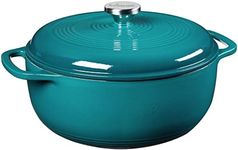
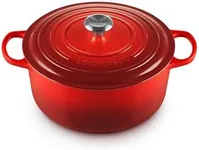



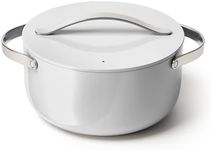
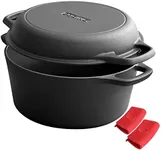



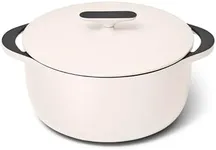





![LoafNest: The Original Breadbaking Dutch Oven. 2 Qt Covered Cast Iron East Sourdough Baker. Non-Toxic Oven-Safe to 500 F [Casserole only]](https://images-proxy.bestreviews.guide/p3IV27U4rJKTqxx-v7OF5H8tq58=/0x150/https://m.media-amazon.com/images/I/41NAV6kVd6L._AC_CX679_.jpg)






